Science News

The makeup of microbial species—the microbiome—in a honey bee queen’s gut changes slowly as she ages, while a worker bee’s microbiome changes much more rapidly, according to a new study published by Agricultural Research Service (ARS) scientists. »
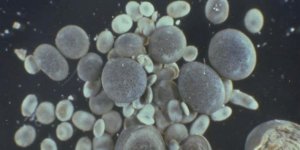
Some bacteria can release toxins that provoke their neighbors into attacking each other, a tactic that could be exploited to fight infections. »
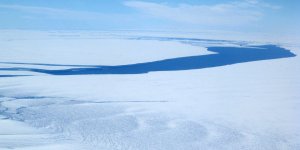
Tracing a chemical signature of helium in seawater, an international team of scientists funded by the National Science Foundation and the United Kingdom's Natural Environment Research Council has discovered a previously unknown volcanic hotspot beneath the massive West Antarctic Ice Sheet. »

It's been known for years that humans and other mammals possess an antiviral gene called RSAD2 that prevents a remarkable range of viruses from multiplying. »

A landmark international study shows that the Great Barrier Reef has suffered 5 death events in the last 30,000 years. The groundbreaking study of the world’s largest reef system reveals that these events were driven mostly by variations in sea level and associated environmental changes. »

Data from NASA's Cassini spacecraft reveal complex organic molecules originating from Saturn's icy moon Enceladus, strengthening the idea that this ocean world hosts conditions suitable for life. Research results show much larger, heavier molecules than ever before. »

Natural predators of common agricultural pests can save farmers money spent on insecticides while being friendly to health and environment, a study carried out in the cotton fields of China suggests. »
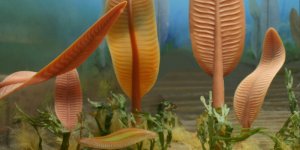
Some of the earliest complex organisms on Earth – possibly some of the earliest animals to exist – got big not to compete for food, but to spread their offspring as far as possible. »

Taking a walk may be a good opportunity to mentally review your to-do list, but using the time to instead be more mindful of your breathing and surroundings may help boost your wellbeing, according to researchers. »

Scientists have solved the riddle behind one of the most recognisable, and annoying, household sounds: the dripping tap. And crucially, they have also identified a simple solution to stop it, which most of us already have in our kitchens. »

A storm of tiny dust particles has engulfed much of Mars over the last two weeks and prompted NASA’s Opportunity rover to suspend science operations. »

A common ingredient in toothpaste and hand wash could be contributing to antibiotic resistance, according to University of Queensland research. »
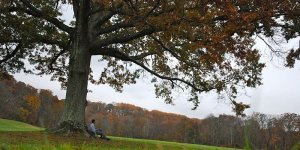
Loneliness is bad for the heart and a strong predictor of premature death, according to a new study. »
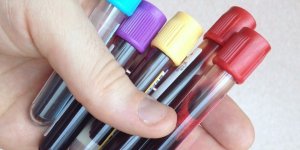
Individuals with group A blood suffer more than others from E. Coli infections. »

Researchers from the University of York and Maldives Whale Shark Research Programme have mapped key habitats of the world's largest fish, the whale shark, shedding light on congregation sites that have perplexed marine biologists. »

Covering walls with concrete or plaster can reduce the growth of moss and mould in tropical homes prone to dampness. »

Researchers have created a technology that could lead to new devices for faster, more reliable ultra-broad bandwidth transfers, and demonstrated how electrical fields boost the non-linear optical effects of graphene. »

A study conducted by researchers from the University of Granada and the Massachusetts Institute of Technology (MIT) found that rather than living alone, microbial plankton in the ocean come together in complex albeit short-lived communities. These communities tend to be cohesive and their turnover is rapid and sharp. »

Scientists from the Universities of Cambridge and Bristol have found a way to create plastic semiconductor nanostructures that absorb light and transport its energy 20 times further than has been previously observed, paving the way for more flexible and more efficient solar cells and photodetectors. »

Animals have evolved over millennia to use camouflage as a lifesaving way to dodge predators - so what happens to them when, over the course of just a few decades, their environments change? »

Scientists re-examining data from an old mission bring new insights to the tantalizing question of whether Jupiter's moon Europa has the ingredients to support life. The data provide independent evidence that the moon's subsurface liquid water reservoir may be venting plumes of water vapor above its icy shell. »

Efforts to tackle snakebite — a recent addition to the WHO’s list of neglected tropical diseases (NTDs) — will take a step forward this month with a resolution set to be approved at the World Health Assembly. »

An extinct strain of the human Hepatitis B virus (HBV) has been discovered in Bronze Age human skeletons found in burial sites across Europe and Asia. »

Native fish hatchlings will find it more difficult to use sound to reach secure shelters in the oceans of the future that are acidified by carbon dioxide, threatening fish populations. »

An international team of astronomers found that the unusual Kuiper Belt Object 2004 EW95 is a carbon-rich asteroid, the first of its kind to be confirmed in the cold outer reaches of the Solar System. »

Researchers from the University of Granada, University Hospital La Paz (Madrid) and the University of Texas (USA) have identified a new molecular mechanism underlying the anti-obesity effects of the chronic administration of melatonin, a naturally occurring hormone released by the pineal gland overnight. »

Researchers at the National Eye Institute have discovered cellular mechanisms that help the 13-lined ground squirrel survive hibernation. »

A new meta-analysis of more than 135,000 people with major depression and more than 344,000 controls has identified 44 genomic variants, or loci, that have a statistically significant association with depression. »

Aided by advanced stem cell technology and tissue chips, National Institutes of Health-funded researchers used stem cells originally derived from a person’s skin to recreate interactions between blood vessels and neurons that may occur early in the formation of the fetal human spinal cord. »

Chronic wasting disease (CWD) did not cross the species barrier to infect cynomolgus macaque monkeys during a lengthy investigation by National Institutes of Health scientists exploring risks to humans. »

A new study shows that sunlight transforms oil spills on the ocean surface more quickly and significantly than previously thought, limiting the effectiveness of chemical dispersants that break up floating oil. »

Low 'mental energy' may affect walking patterns in older adults more than physical fatigue. New research shows the relationship between walking ability and self-reported mood. »

A research team led by ecologists Sunita Shah Walter of the University of Delaware and Peter Girguis of Harvard University has shown that underground aquifers near the undersea Mid-Atlantic Ridge act like natural biological reactors, pulling in cold, oxygenated seawater, and allowing microbes to consume more refractory carbon than scientists believed. »

Even after decades of observations and a visit by NASA's Voyager 2 spacecraft, Uranus held on to one critical secret -- the composition of its clouds. Now, one of the key components of the planet's clouds has finally been verified. »

The results of a study have enabled researchers to better understand the role of eggshells in embryo development and hatching. »

The effects of beverages such as coffee and tea are widely studied but still not clearly understood. »

Categorization, or the recognition that individual objects share similarities and can be grouped together, is fundamental to how we make sense of the world. »

We know more about the surface of the moon than we do about the bottom of the ocean. The seafloor is an alien landscape, with crushing pressures, near-total darkness and fluids wafting from cracks in the Earth's crust. »

Studies show that too much sitting, like smoking, increases the risk of heart disease, diabetes and premature death. »

Study provides insights into the immune system’s role in recovery after concussion in mice. »

The researchers used NASA’s Chandra X-ray Observatory to study a cold front located in the Perseus galaxy cluster that extends for about two million light years, or about 10 billion billion miles. »

Researchers say the love youngsters have for wildlife may be clouding the public's mind about how endangered those creatures are. »

The world's rivers and fresh water systems are full of pollution from prescription and over-the-counter drugs and it is taking a toll on the environment and wildlife, experts say. »

A common soil bacterium may hold the key to preserving the germ-killing power of penicillin. U.S. Department of Agriculture (USDA) scientists in Peoria, Illinois, helped mass produce the antibiotic during World War II to treat Allied soldiers and later civilians. But decades of widespread use has since enabled some germs to develop resistance to it. »

For centuries, the thinking has been that all the nitrogen available for plant growth worldwide comes from the atmosphere. But a new study shows that more than a quarter of that nitrogen is derived from the weathering of Earth's bedrock. »

New images from ESO’s Very Large Telescope in Chile and other telescopes reveal a rich landscape of stars and glowing clouds of gas in one of our closest neighbouring galaxies, the Small Magellanic Cloud. »

Amid efforts to find alien life, scientists have not yet confirmed the existence of an extraterrestrial civilization. Findings of a new study suggest this has something do with the element phosphorus lacking in the cosmos. »

With a gelling agent commonly used in preparing pastries, researchers from the Inspired Nanomaterials and Tissue Engineering Laboratory have successfully fabricated an injectable bandage to stop bleeding and promote wound healing. »

A simple potassium solution could boost the efficiency of next-generation solar cells, by enabling them to convert more sunlight into electricity. »

Scientists are monitoring a defunct Chinese space station that is expected to fall to Earth around the end of the month, the largest manmade object to re-enter Earth’s atmosphere in a decade. »